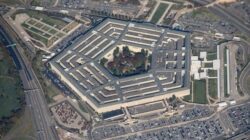HOUSTON, TX — In an endeavor to one day save the Earth, the National Aeronautics and Space Administration (NASA) successfully crashed a spaceship into an asteroid Monday night.
The US space agency aired live the Double Asteroid Redirection Test (DART) to show the public its planetary defense test in the event that an asteroid collides with our planet in the future.
NASA spent seven years planning the intentional crash to explore if it could physically control a space probe to hit with an asteroid and divert its course to avoid a possibly devastating impact on Earth.
“Wow, that was incredible, wasn’t it?” DART principal scientist Nancy Chabot said minutes after the spacecraft successfully smashed with the asteroid.
The DART mission took off last November from California’s Vandenberg Space Force Base. On Monday night, mission commanders manually guided the spaceship into the asteroid Dimorphos, which was 6.5 million miles (10.5 million kilometers) away in deep space.
The spacecraft collided with the asteroid at 15,000 miles per hour (24,140 kilometers per hour), with special cameras from an Italian space probe catching the cosmic event.
“This was an extremely difficult technology demonstration that hit a little asteroid in such spectacular fashion,” Chabot explained.
NASA stated that the purpose was not to kill the asteroid, but to determine if scientists could manually deflect it from colliding with Earth if scientists could detect an asteroid on a collision trajectory with Earth long enough in advance.
Scientists will now examine the data from the hit using telescope records of the crash to determine how effective the impact was in altering the asteroid’s route.
According to NASA, no known asteroid larger than 450 feet (137 meters) in diameter has a serious risk of colliding with Earth in the next 100 years.
Source: Anadolu










